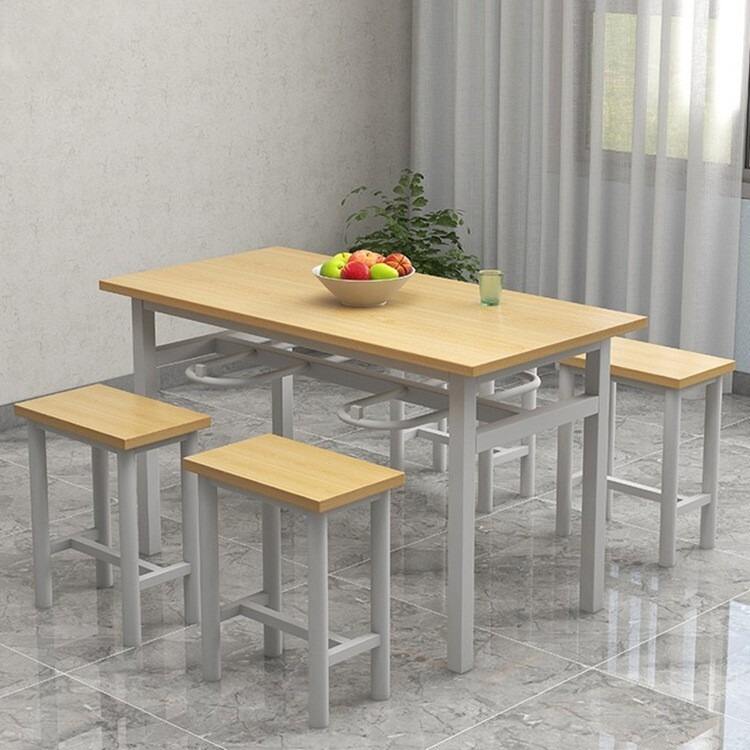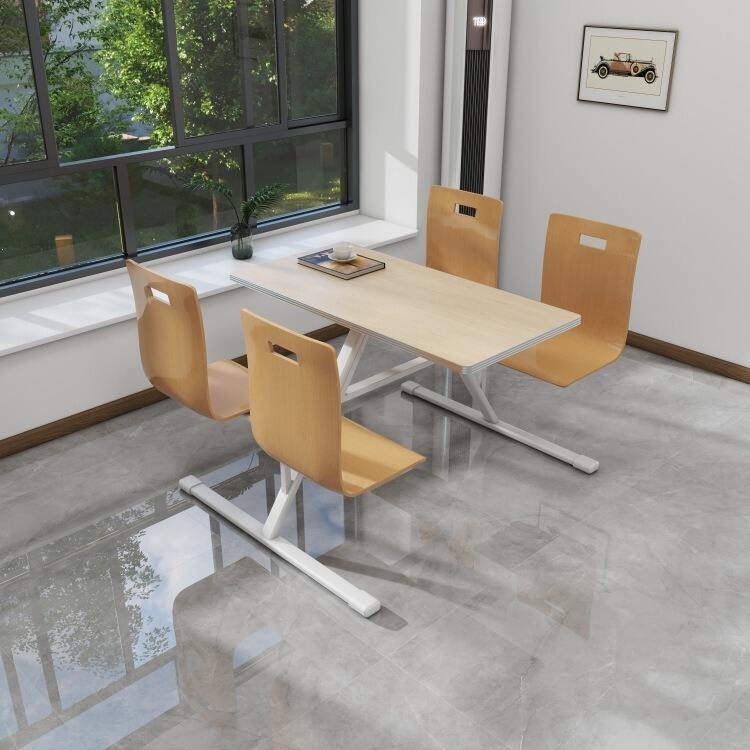Essential Guidelines for Selecting Commercial Dining Furniture
Creating an efficient and welcoming dining space starts with selecting the right canteen table and chair combinations. Whether you're outfitting a school cafeteria, corporate dining hall, or industrial canteen, the furniture you choose plays a crucial role in both functionality and atmosphere. This comprehensive guide will walk you through everything you need to know about selecting durable, comfortable, and cost-effective dining furniture solutions that stand the test of time.
Making the right choice in canteen furniture involves careful consideration of multiple factors, from material durability to space optimization. Your selection will impact not only the daily operations but also the overall dining experience of your users. Let's explore the key aspects that will help you make an informed decision for your facility.
Material Selection and Durability Factors
Premium Materials for Long-lasting Performance
The foundation of any reliable canteen table and chair set lies in its construction materials. High-grade stainless steel frames offer exceptional durability and resistance to rust, making them ideal for high-traffic environments. Alternatively, industrial-grade aluminum provides a lightweight yet sturdy option that's easy to move and maintain.
For table surfaces and chair seats, consider materials like high-pressure laminate (HPL) or phenolic resin. These materials resist scratches, stains, and moisture while maintaining their appearance even after years of heavy use. Some modern canteen furniture also incorporates advanced polymer composites that combine durability with comfort.
Surface Treatments and Protective Features
Beyond the base materials, protective treatments significantly extend furniture lifespan. Look for powder-coated metal components that resist chipping and scratching. Edge banding on table tops prevents moisture infiltration and delamination, while UV-resistant finishes maintain color integrity even in spaces with abundant natural light.
Anti-bacterial surface treatments have become increasingly important in modern canteen furniture. These specialized coatings help maintain hygiene standards and make cleaning more effective, particularly important in food service environments.
Space Optimization and Layout Considerations
Sizing and Configuration Options
The right canteen table and chair configuration can maximize your available space while ensuring comfortable dining. Standard tables typically range from 4-seater to 8-seater options, but modular systems offer greater flexibility. Consider flip-top tables that can be easily stored when not in use, or expandable designs that accommodate varying group sizes.
Chair designs should complement your table choice while considering space efficiency. Stackable chairs are invaluable for storage and cleaning, while nesting tables can help optimize floor space during off-peak hours. Remember to factor in adequate aisle space between table arrangements for comfortable movement.
Traffic Flow and Accessibility Planning
Effective space planning goes beyond mere furniture placement. Consider traffic patterns during peak hours and ensure your canteen table and chair layout facilitates smooth movement. Allow at least 36 inches between tables for comfortable passage, and create clear paths to service areas and exits.
Accessibility requirements should influence your furniture selection. Include tables at various heights to accommodate wheelchair users, and ensure some chairs feature armrests for those who need additional support when sitting or standing.

Maintenance and Longevity Considerations
Daily Care Requirements
Choose canteen table and chair sets that facilitate easy cleaning and maintenance. Smooth surfaces without deep grooves or difficult-to-reach areas make daily cleaning more efficient. Look for materials that can withstand regular sanitization without degrading or losing their finish.
Consider furniture with removable components that can be replaced if damaged, rather than requiring complete set replacement. This approach can significantly reduce long-term maintenance costs while extending the furniture's useful life.
Long-term Durability Features
Invest in features that enhance longevity, such as reinforced joints and heavy-duty glides. Quality canteen furniture should include stabilizing features like adjustable feet to prevent wobbling on uneven floors. Look for warranty coverage that reflects manufacturer confidence in their products' durability.
Regular inspection and maintenance schedules help identify potential issues before they become major problems. Choose furniture designed with serviceable parts that can be easily tightened or adjusted to maintain stability over time.
Frequently Asked Questions
What is the ideal table height for canteen furniture?
Standard canteen table height typically ranges from 28 to 30 inches, which comfortably accommodates most adults. However, it's recommended to include some adjustable-height options or ADA-compliant tables at 34 inches to ensure accessibility for all users.
How many seats should I plan for in my canteen space?
A general rule is to allow 18-24 inches of table edge per person for comfortable seating. Calculate your total seating needs based on your maximum occupancy during peak hours, then add 10-15% extra capacity for flexibility in arrangement and unexpected surges.
What are the most durable materials for canteen chairs?
The most durable materials for canteen chairs include powder-coated steel frames, polypropylene seats, and commercial-grade fabrics for upholstered options. These materials resist wear, are easy to clean, and maintain their appearance even with heavy daily use.
How often should canteen furniture be replaced?
Quality canteen table and chair sets, when properly maintained, should last 7-10 years in high-traffic environments. However, this can vary based on usage patterns, maintenance practices, and environmental conditions. Regular assessment of furniture condition helps determine optimal replacement timing.


